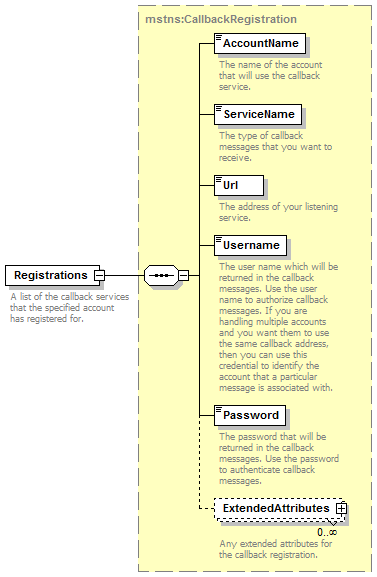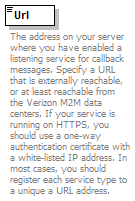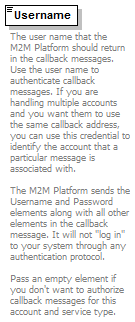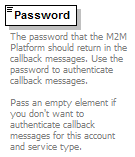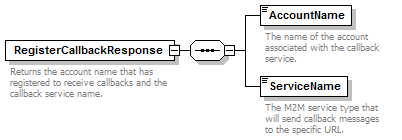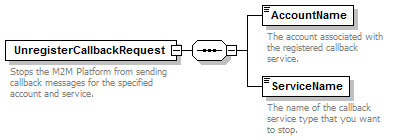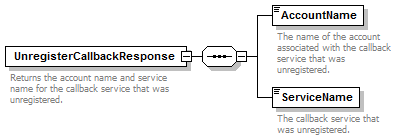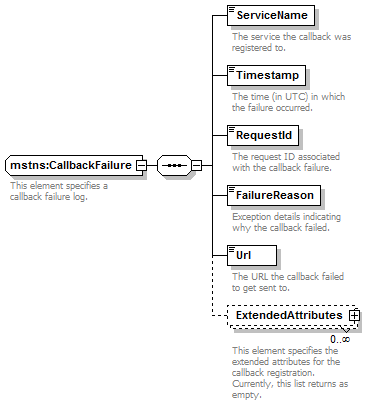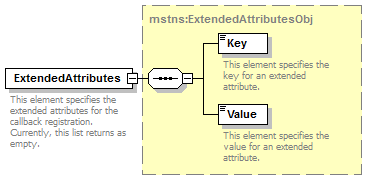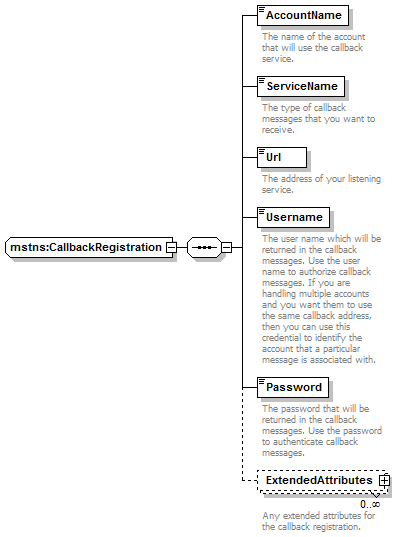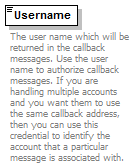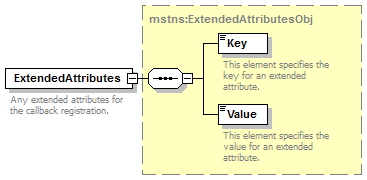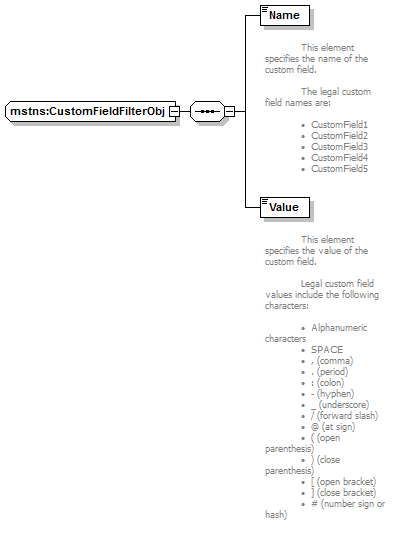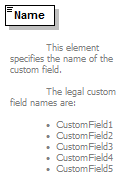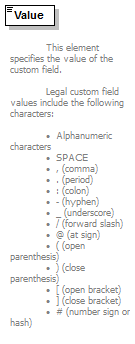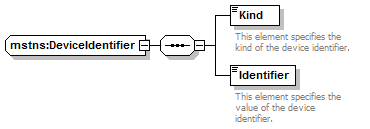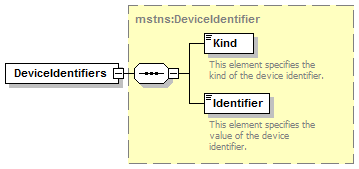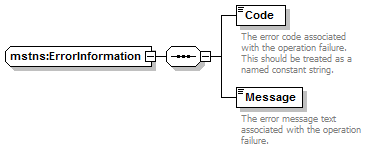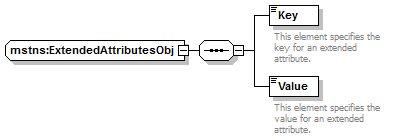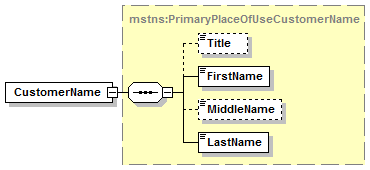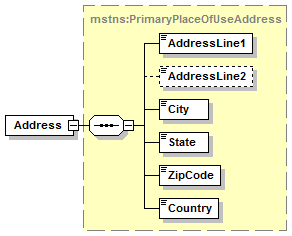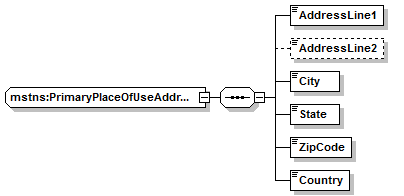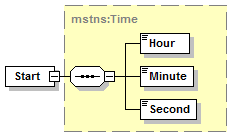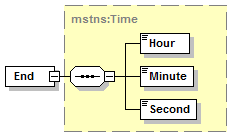| source |
<xs:element name="RegisterCallbackRequest">
<xs:annotation>
<xs:documentation>Registers a URL where an account will receive callback messages from a specified ThingSpace Platform service. You are responsible for creating and running a listening process on your server at that URL.</xs:documentation>
</xs:annotation>
<xs:complexType>
<xs:sequence>
<xs:element name="AccountName" type="xs:string">
<xs:annotation>
<xs:documentation>The name of the account that will use the callback service.</xs:documentation>
</xs:annotation>
</xs:element>
<xs:element name="ServiceName" type="xs:string">
<xs:annotation>
<xs:documentation>The type of callback messages that you want to receive at this URL. In most cases, you should register for only one callback service at each URL address.
Set this to one of the following values:
"CarrierService" - Asynchronous responses from Carrier Service APIs.
"DeviceUsage" - Callback messages containing aggregated usage data requested by GetAggregateDeviceUsage, and callback messages containing rated usage data requested by GetRatedDeviceUsage.
"EnhancedConnectivityService" - Callback messagess from SendSmsMessage, RemotePrlUpdate, or WakeUpDevice, and also unsolicited SMS messages from devices that can send them to your application.
"ExternalProvisioningChanges" - Callback messages when provisioning changes are made outside of the WNS APIs, such as when a user performs one of the following provisioning actions from an interactive Verizon system:
- Activate
- Deactivate
- Suspend
- Resume
- Change ESN
- Change MEID
- Change MDN
"PromoChanges" - Unsolicited callback messages for changes to promotional codes. The ThingSpace Platform will send a PromoChange callback message shortly after the end of a device's billing cycle if a promotional package was removed during the billing cycle.
"ResumeTrackingNotification" - Unsolicited callback messages to notify you about devices that will automatically return to active status. The ThingSpace Platform will send a callback message 7 days before a suspended device will auto-resume.</xs:documentation>
</xs:annotation>
</xs:element>
<xs:element name="Url" type="xs:string">
<xs:annotation>
<xs:documentation>The address on your server where you have enabled a listening service for callback messages. Specify a URL that is externally reachable, or at least reachable from the Verizon M2M data centers. If your service is running on HTTPS, you should use a one-way authentication certificate with a white-listed IP address. In most cases, you should register each service type to a unique a URL address.</xs:documentation>
</xs:annotation>
</xs:element>
<xs:element name="Username" type="xs:string">
<xs:annotation>
<xs:documentation>The user name that the ThingSpace Platform should return in the callback messages. Use the user name to authenticate callback messages. If you are handling multiple accounts and you want them to use the same callback address, you can use this credential to identify the account that a particular message is associated with.
The ThingSpace Platform sends the Username and Password elements along with all other elements in the callback message. It will not "log in" to your system through any authentication protocol.
Pass an empty element if you don't want to authorize callback messages for this account and service type. </xs:documentation>
</xs:annotation>
</xs:element>
<xs:element name="Password" type="xs:string">
<xs:annotation>
<xs:documentation>The password that the ThingSpace Platform should return in the callback messages. Use the password to authenticate callback messages.
Pass an empty element if you don't want to authenticate callback messages for this account and service type. </xs:documentation>
</xs:annotation>
</xs:element>
</xs:sequence>
</xs:complexType>
</xs:element> |



